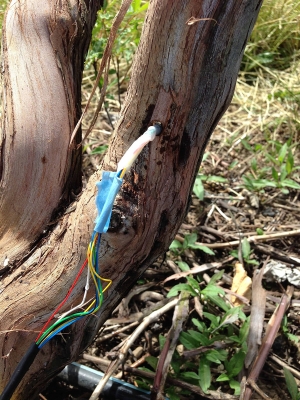
Cornell Chronicle [2017-02-06]:
A water sensor technology that began as basic research at Cornell is blooming into a business that fills a vital need for grape, nut, apple and other growers.
While current water sensing tools are expensive, inaccurate or labor intensive, the new sensor tells growers when their plants need irrigation with accurate, real-time readings at reasonable cost.
Much like a blood pressure gauge for humans, the sensor reads the water pressure inside the plant. When plants are thirsty, their water pressure is low, sometimes even negative. The sensor reads this pressure inside the plant to help growers ensure plant health and optimize water use in drought-stricken agricultural areas. Applying water at the right time can also greatly improve the quality of fruits, nuts and especially grapes for red wines.
In mid-2016, Cornell engineers and horticulturalists who developed the sensor launched FloraPulse, a startup aimed at commercializing the sensor and using it to provide agricultural services. The first target markets are grape and nut growers in California’s Central and Napa valleys.


